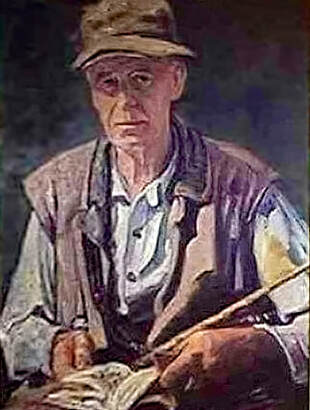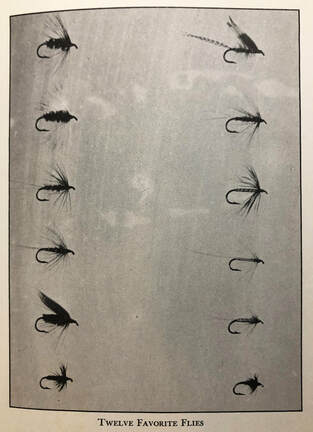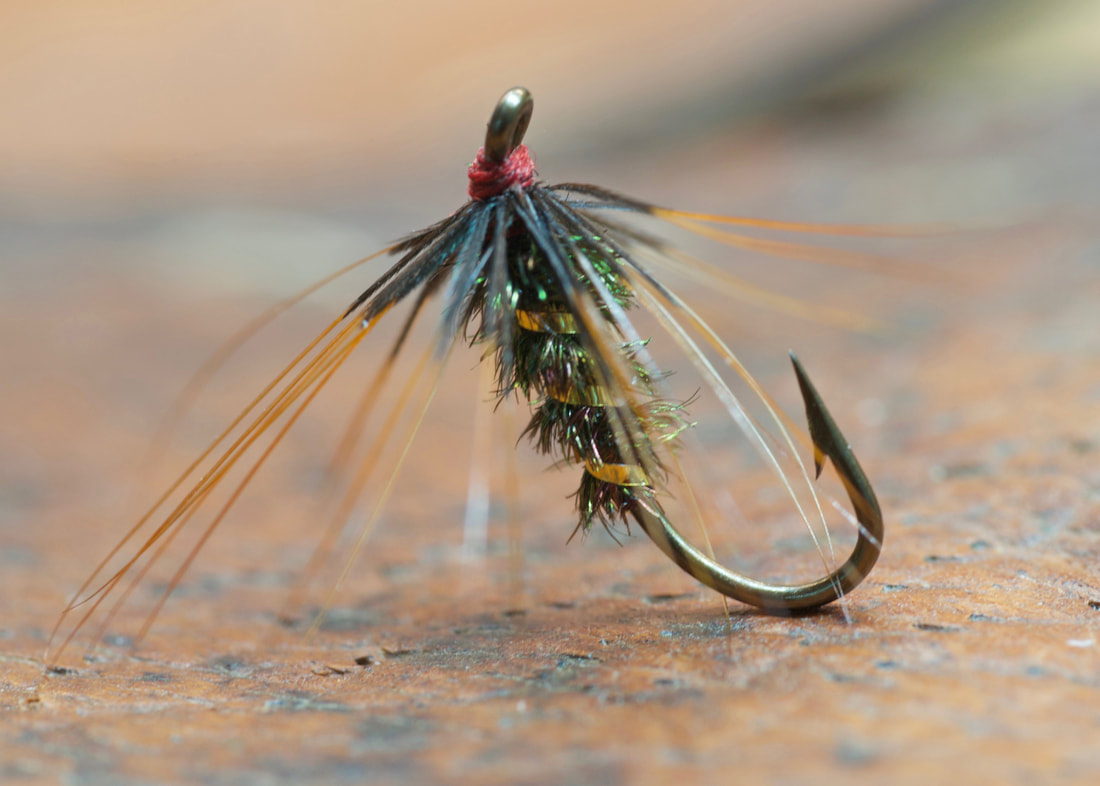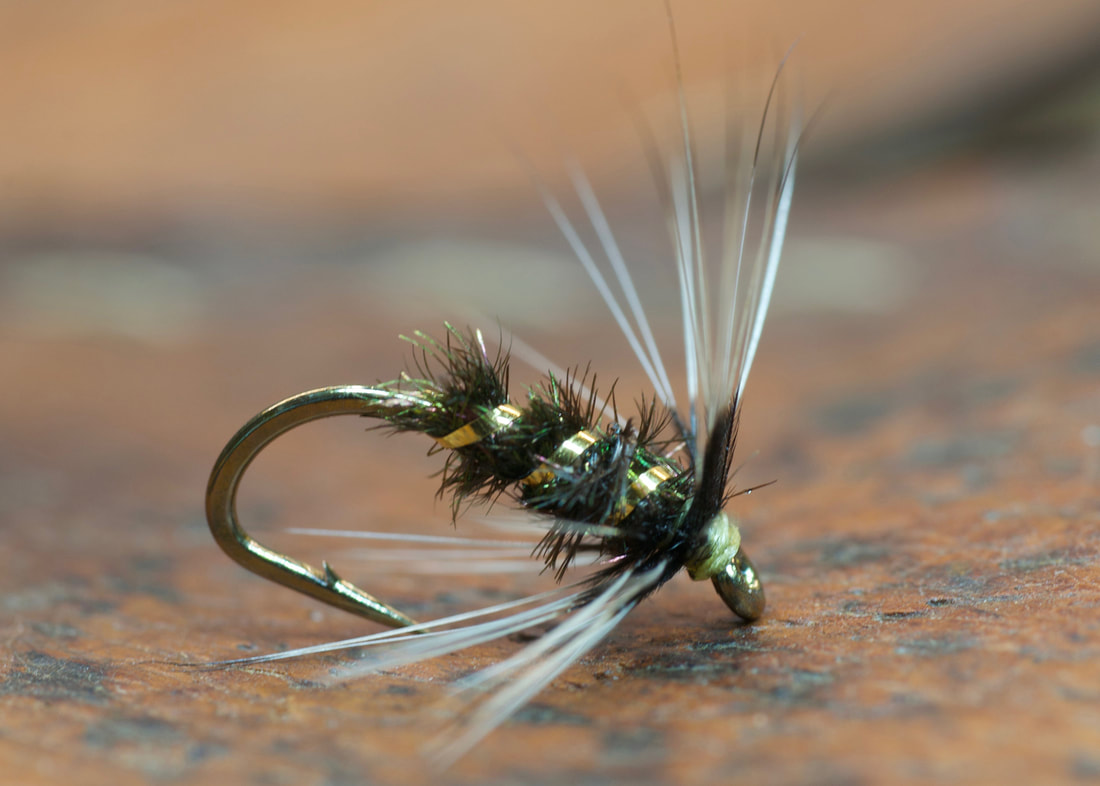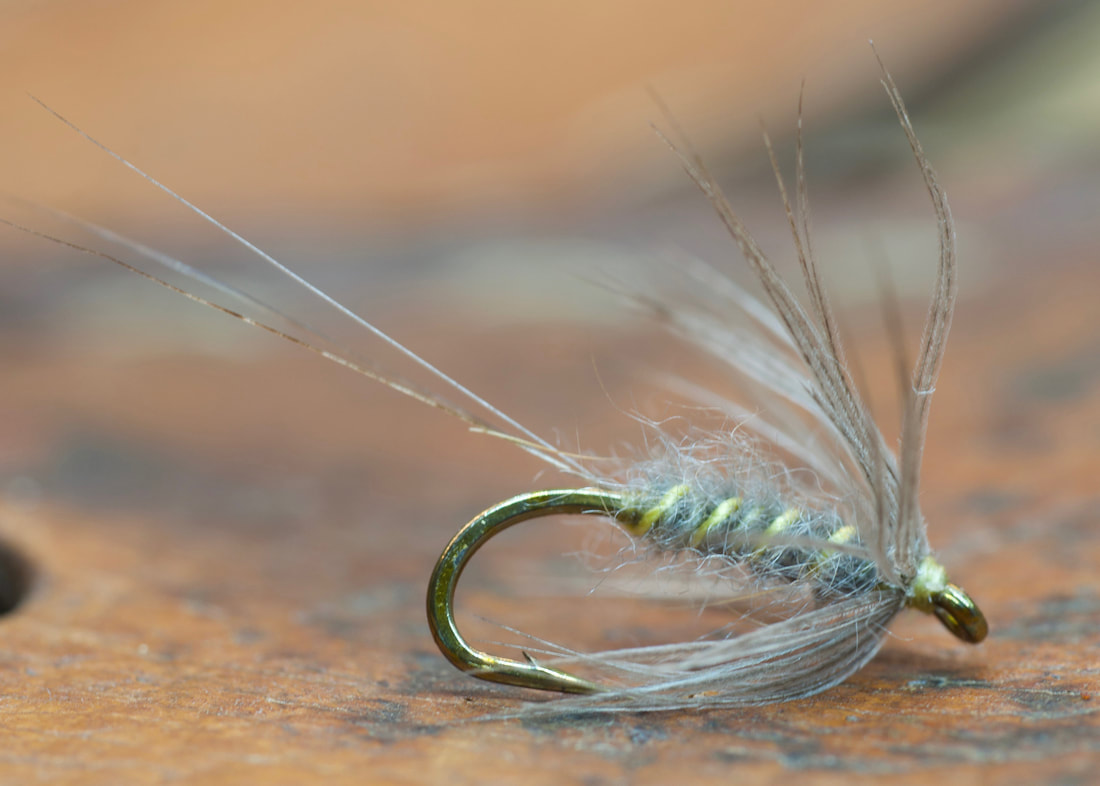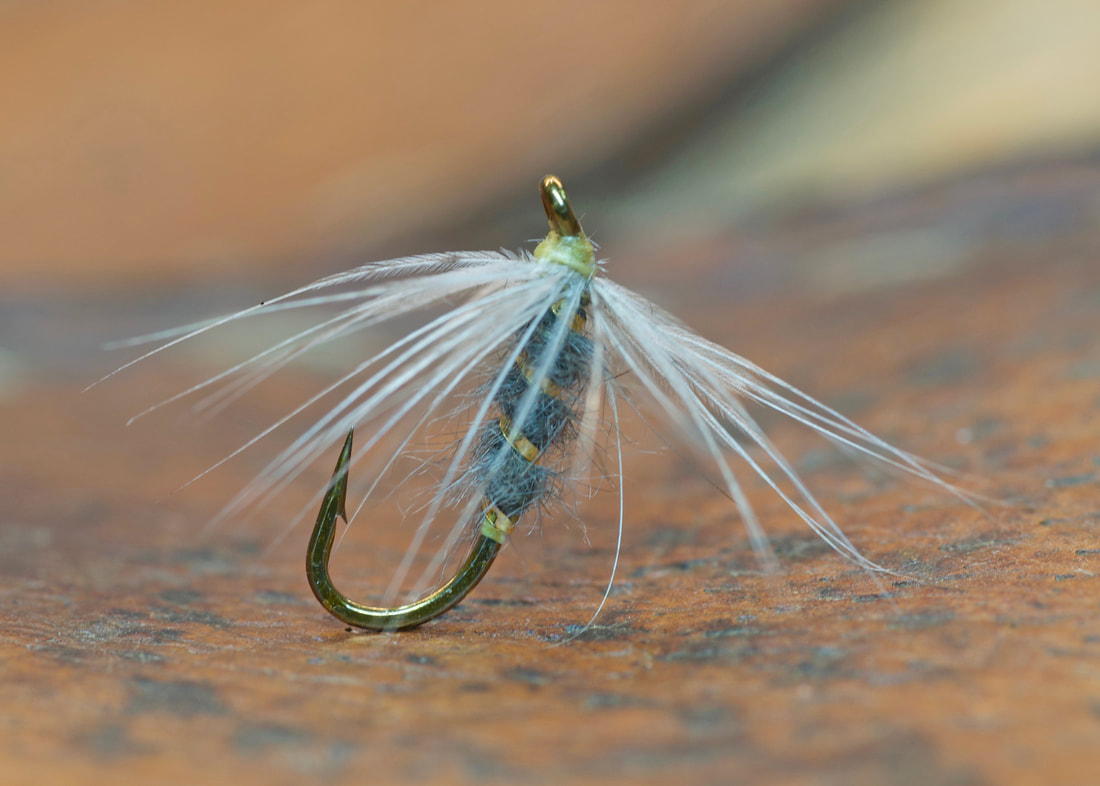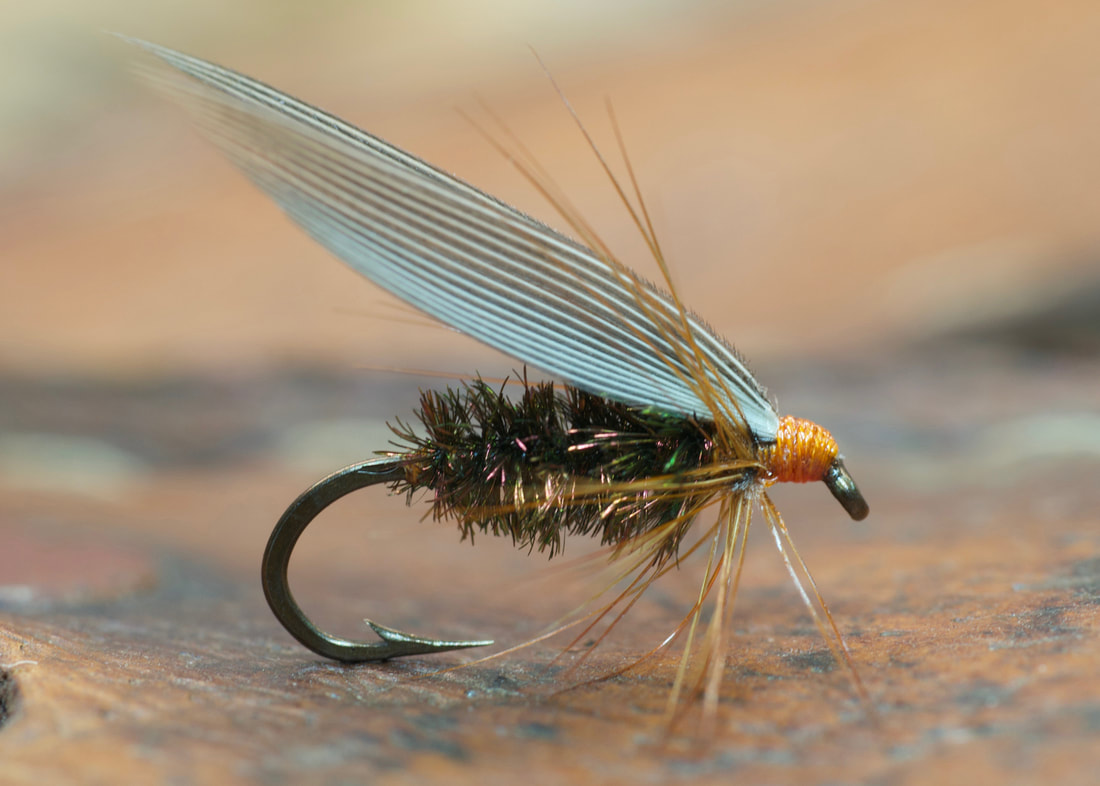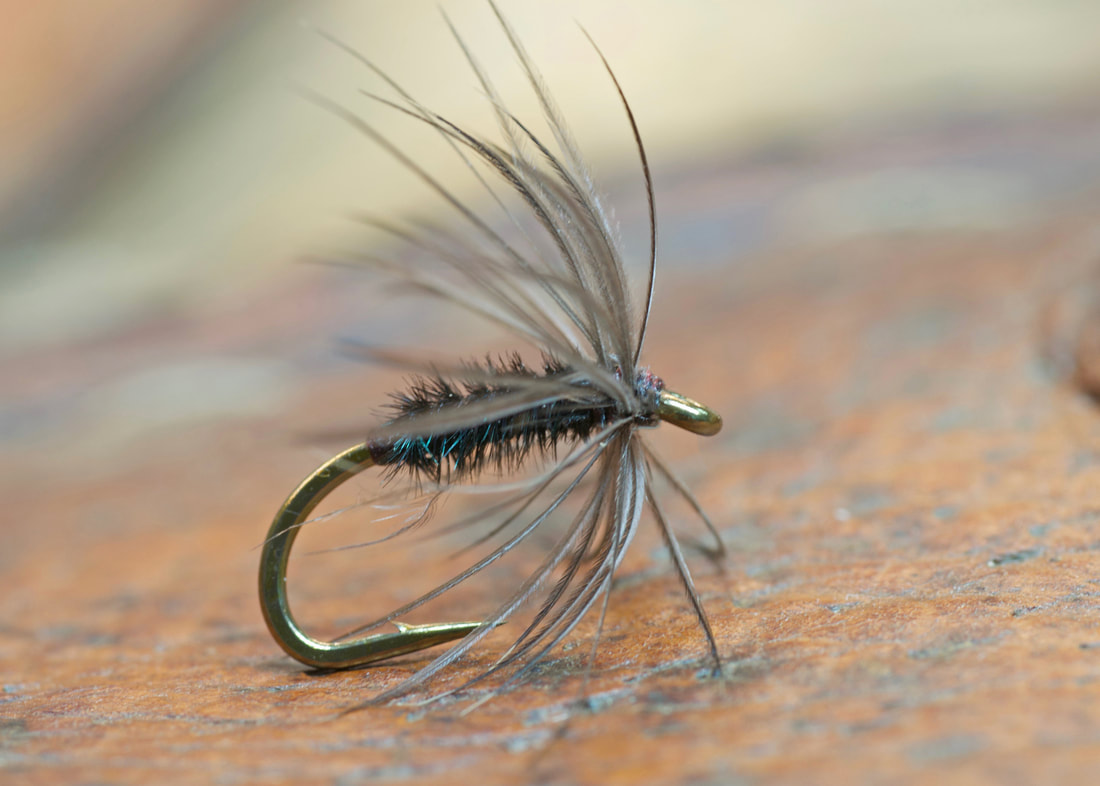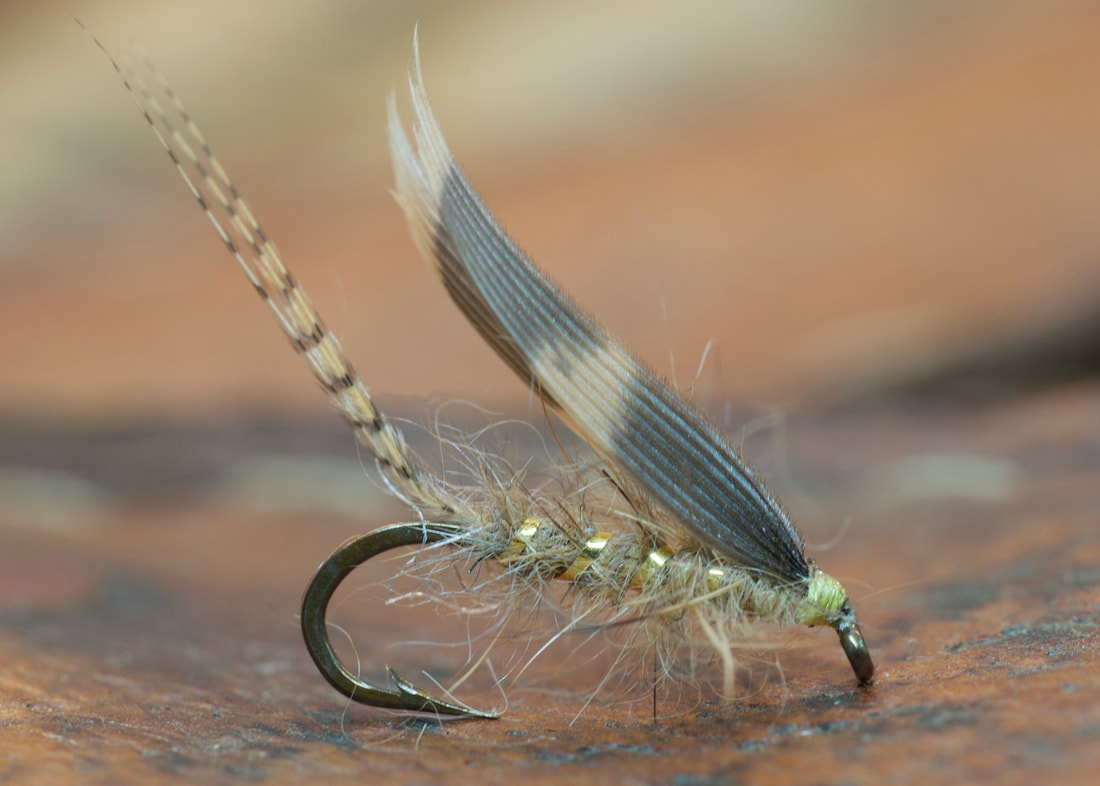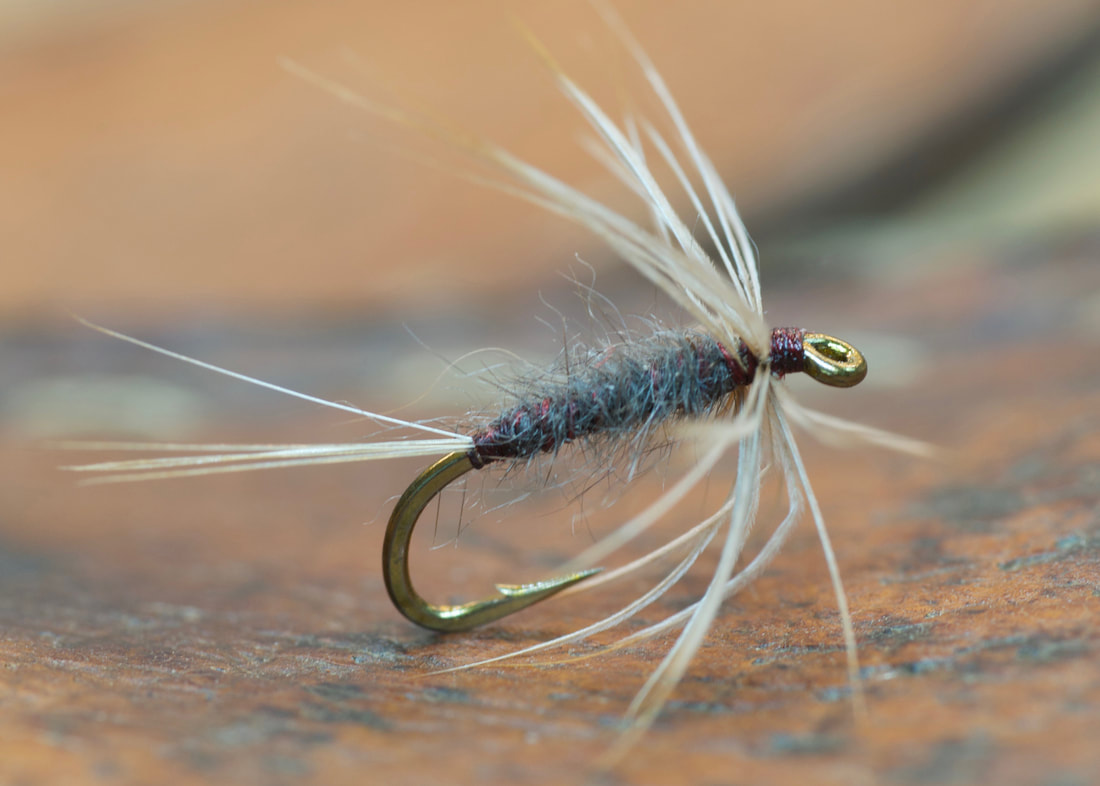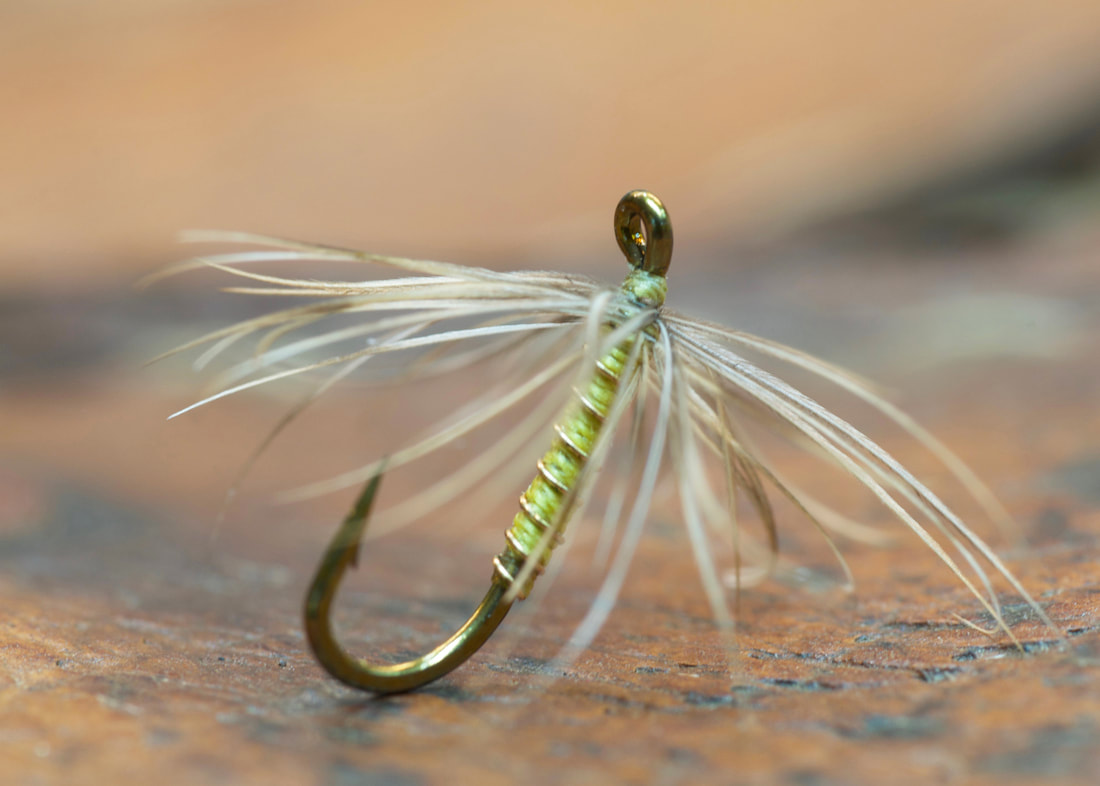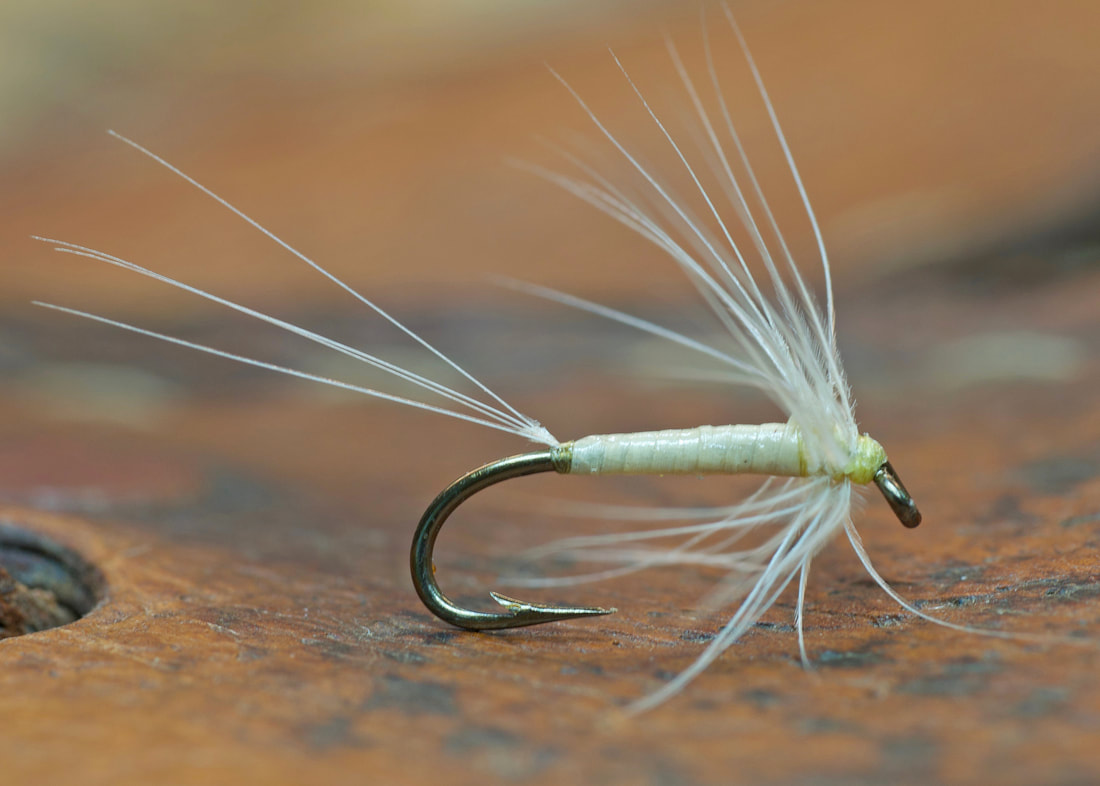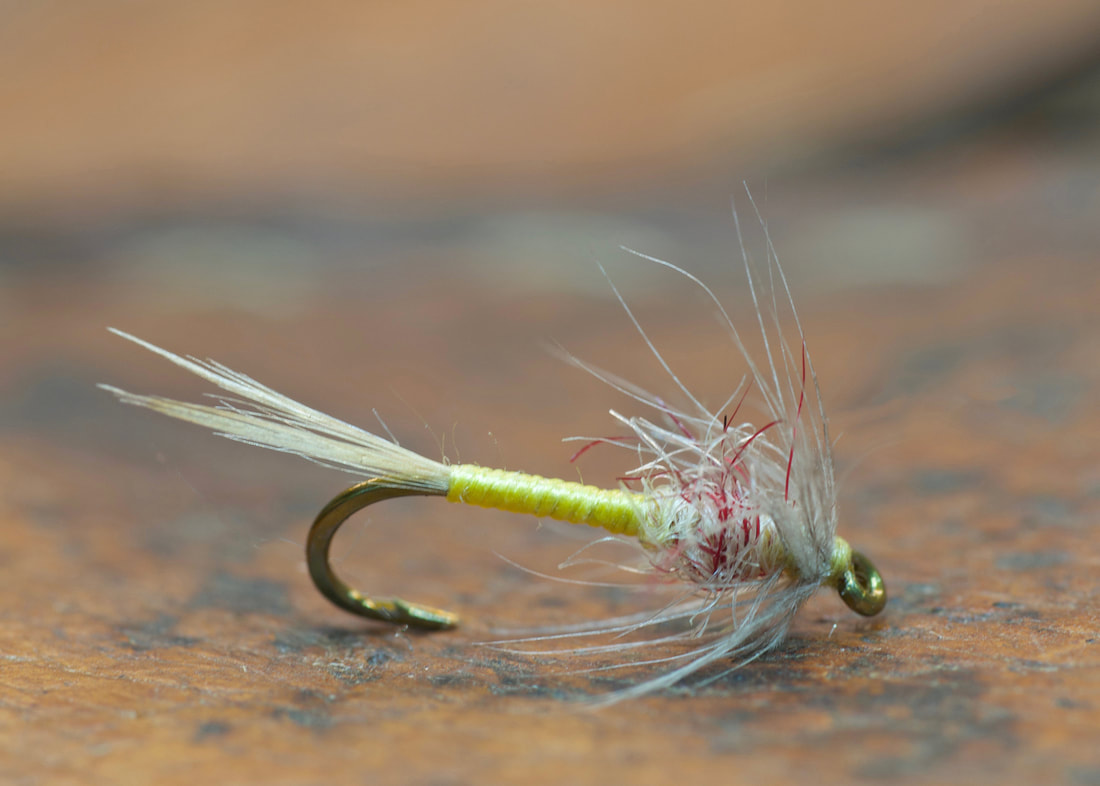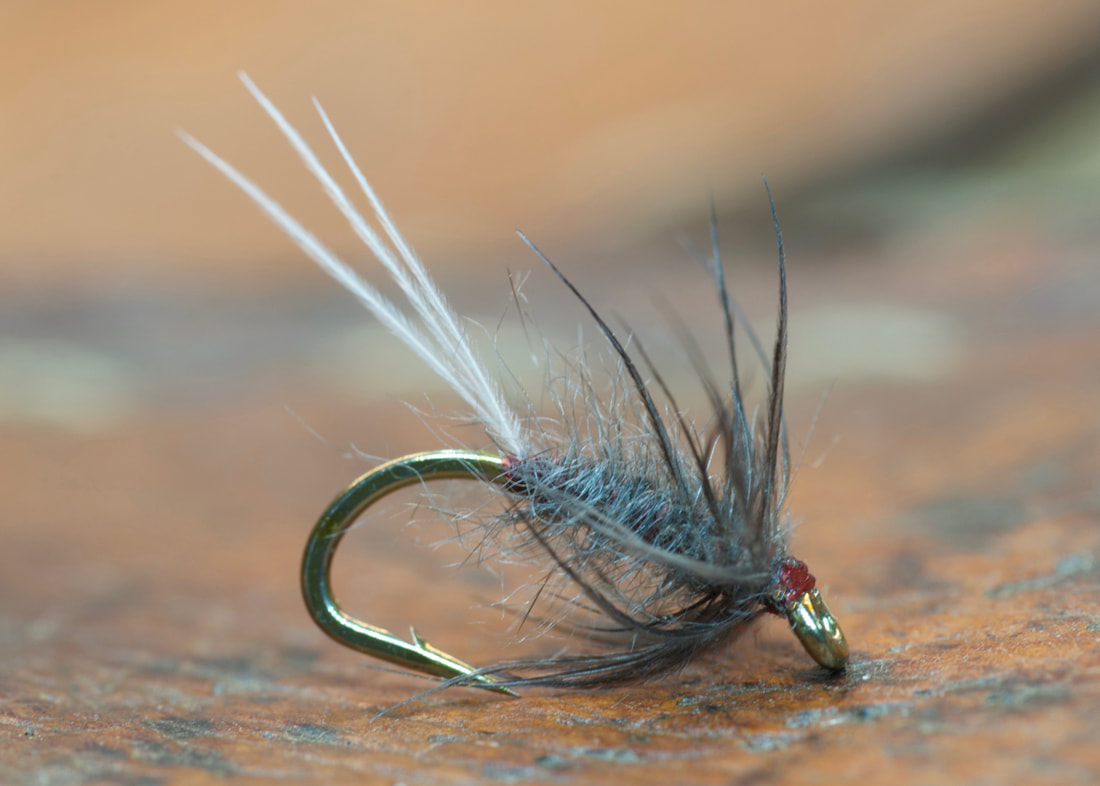|
Leisenring's 12 Favorites
Here are Leisenring's 12 favorite flies as described in "The Art of Tying the Wet Fly and Fishing the Flymph". I would not consider the two winged patterns to be flymphs. See here to help you decide which are and are not. I have included all 12 patterns on this page in order to complete the set. The patterns are listed as they are in "The Art of Tying the Wet Fly and Fishing the Flymph." All the flies shown on this page are tied by Carl E. Sanders. |
|
Old Blue Dun
Hook: 12, 13, 14 Silk: Primrose yellow Hackle: Blue-dun hen hackle of good quality Tail: Two or three glassy fibers from a rusty-blue-dun cock's hackle Rib: One strand of yellow buttonhole twist Body: Muskrat underfur spun on primrose yellow silk, a little of the silk showing through the dubbing at the tail Wings: Starling optional |
|
Hare's Ear
Hook: 13, 14 Silk: Primrose yellow Hackle: None: a few fibers of dubbing picked out for legs Tail: Two or three fibers of the fine mottled feather of a wood duck or mandarin duck Rib: Very narrow flat gold tinsel Body: Fur from the lobe or base of a hare's ear spun on primrose yellow silk Wings: English woodcock secondaries with buff tips |
|
Tup's Nymph
Hook: 13,14 Silk: Primrose yellow Hackle: Very small light blue dun hen hackle or medium-dark honey dun hen hackle Body: Halved: rear half of primrose yellow buttonhole twist; thorax or shoulder of yellow and claret seal fur mixed dubbing spun on primrose yellow silk Tail: Two honey dun hackle points NOTE: The pattern section of the book near the pattern plate does not list a tail. However, Leisenring uses the Tup's pattern as an example of tying a nymph and in that pattern the tail above is included. The Tup's nymph shown in the pattern plate in the book does show a tail of hackle fibers. Your choice! |
|
Iron Blue Nymph (Dun)
Hook: 14,15 Silk: Crimson or claret Hackle: Two turns of a very short cock jackdaw throat hackle Tail: Two or three soft white fibers tied very short Body: Dark mole fur spun on crimson or claret tying silk with two or three turns of the silk exposed at the tail NOTE: The pattern in the book calls this the Iron Blue Nymph however the pattern plate lists it as the Iron Blue Dun |
